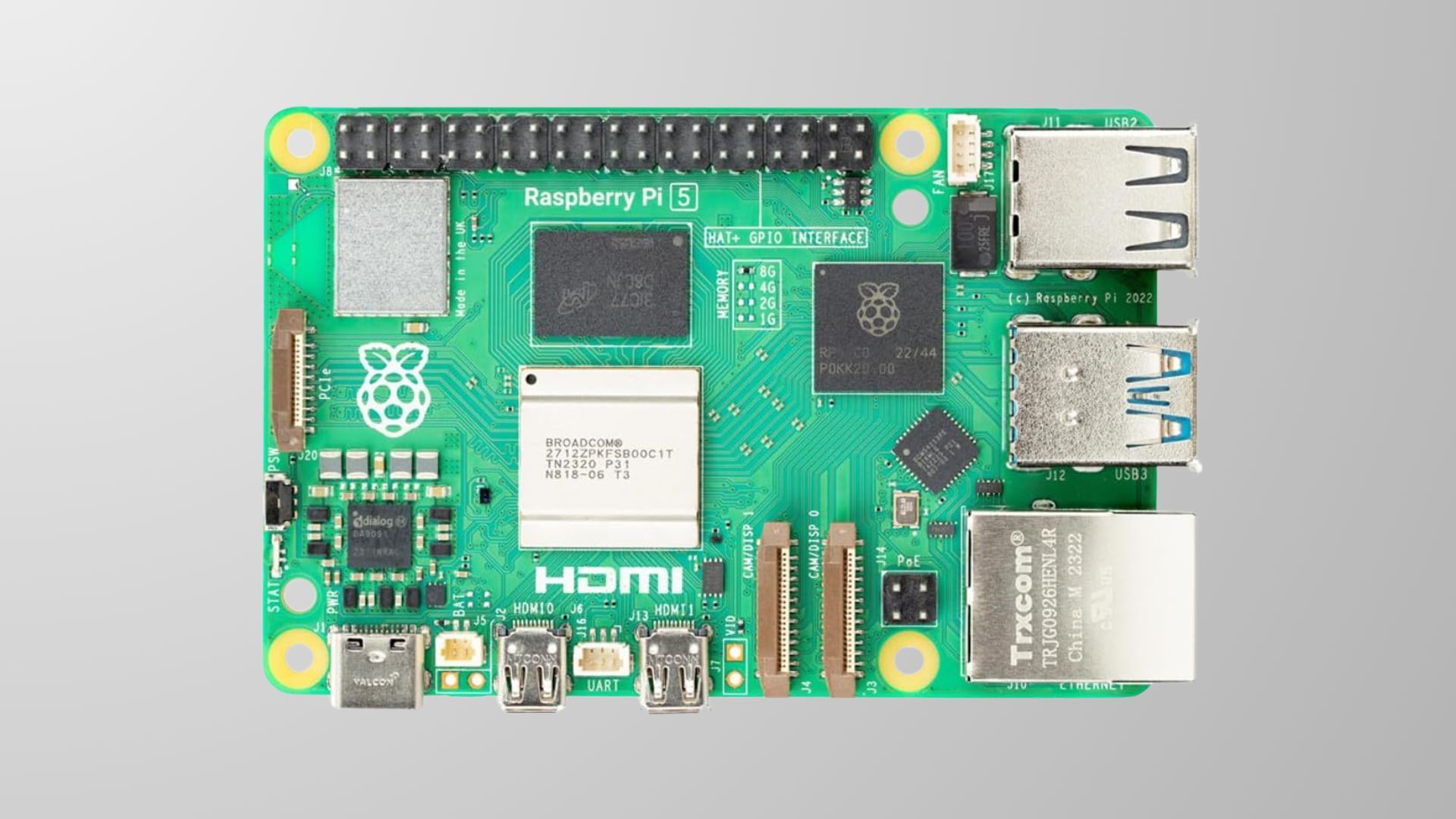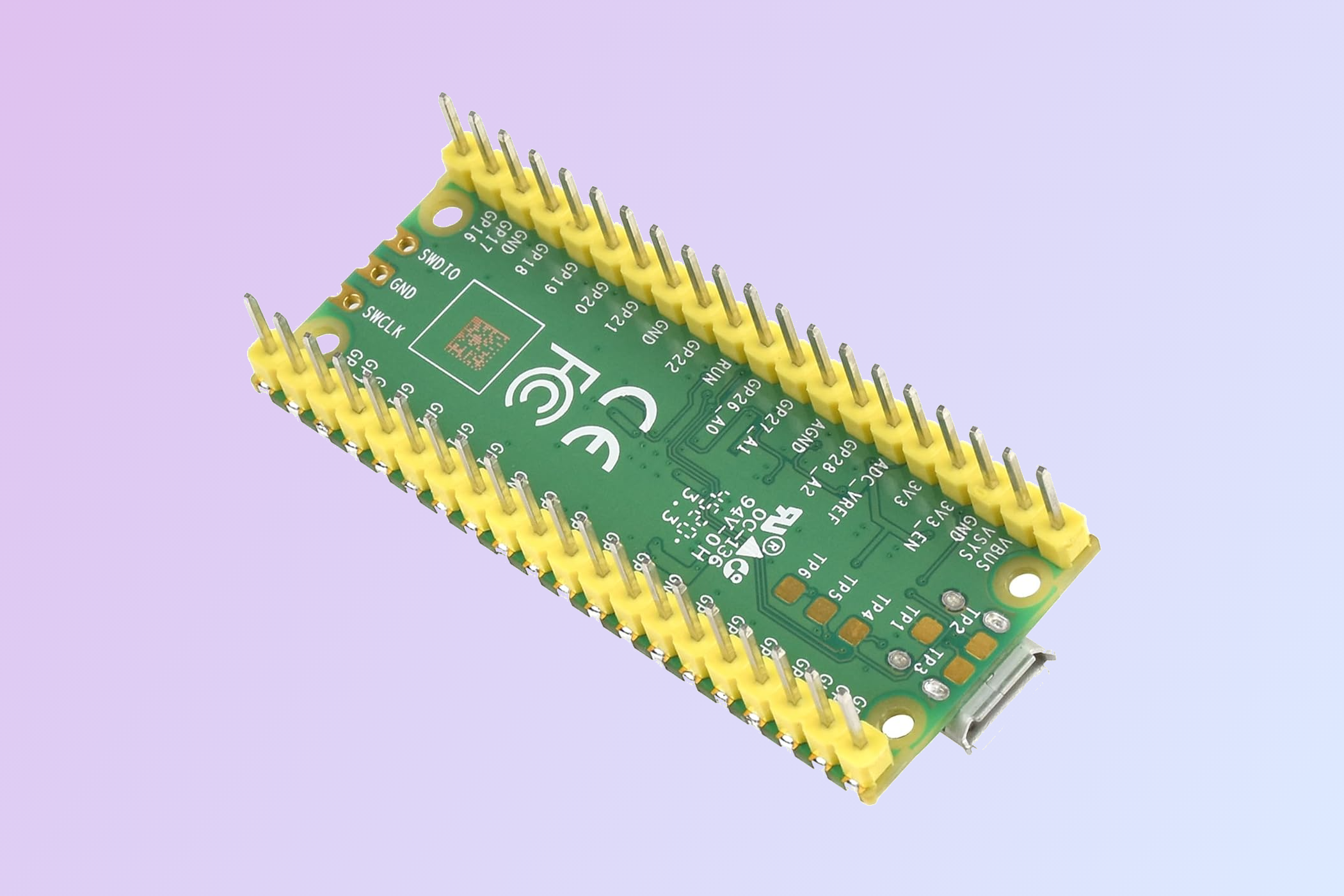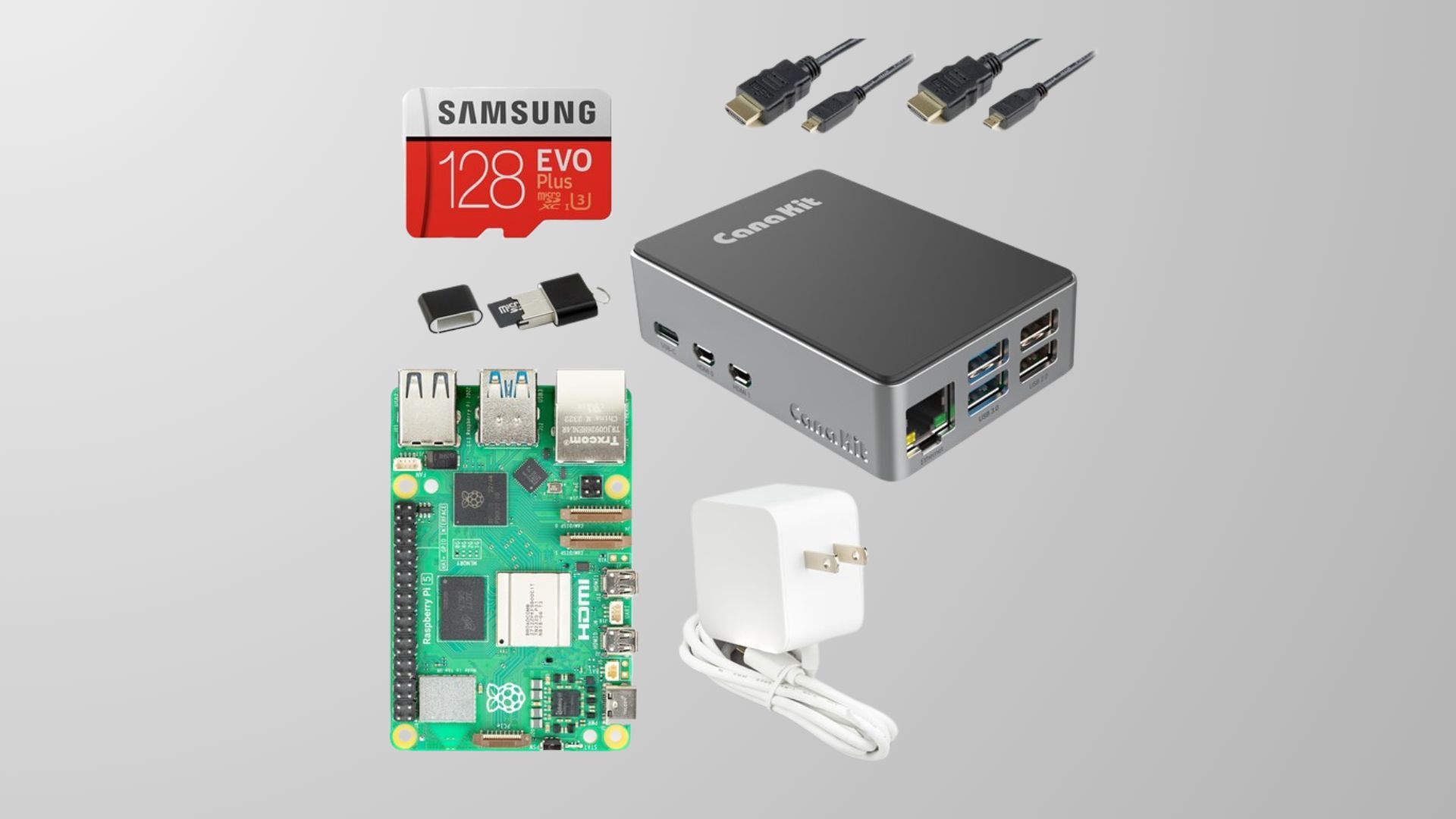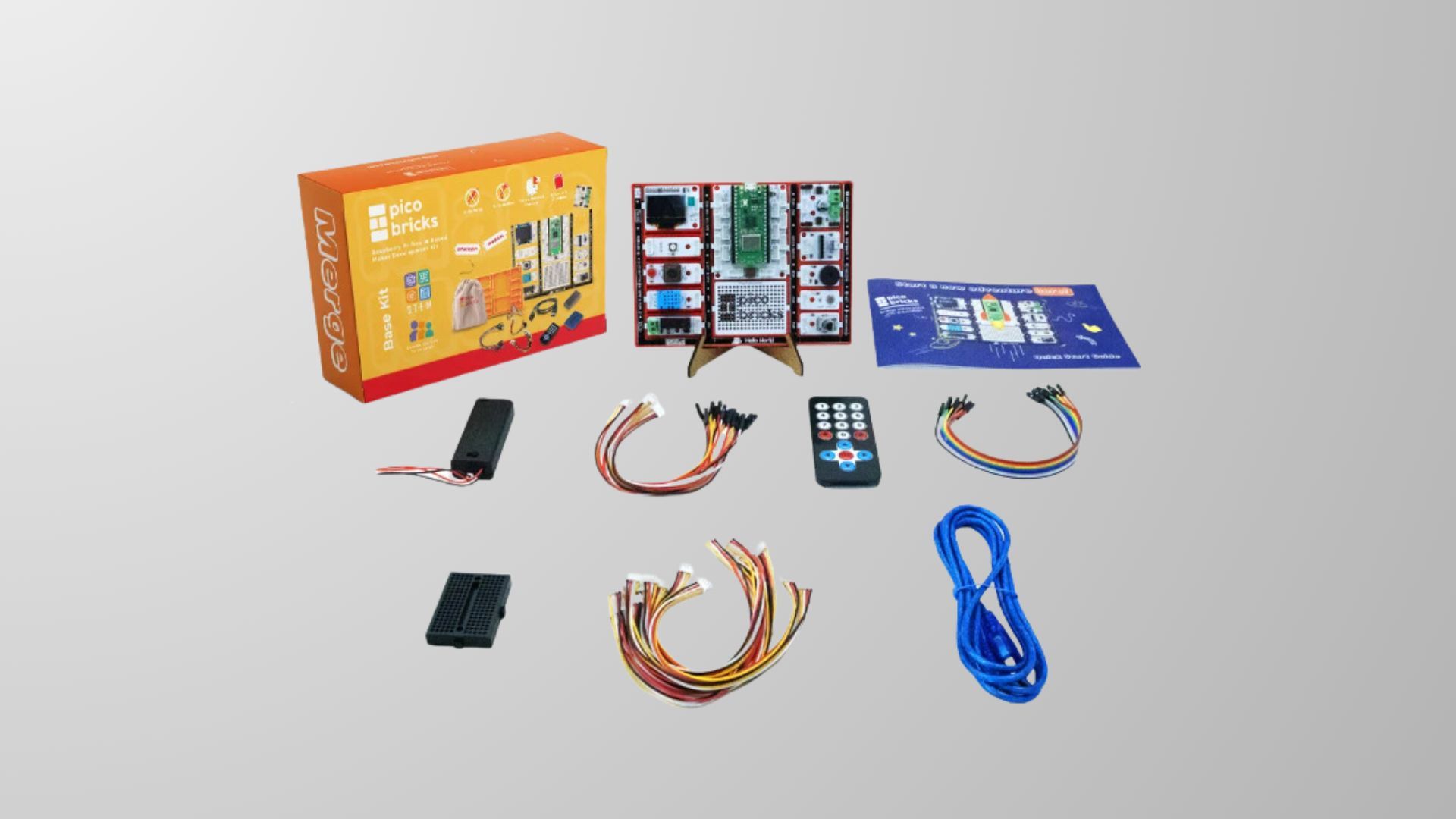Most computers are an array of components and wires—but not the Raspberry Pi. The simple single-board alternative puts the core of a computer right in your palm. With the right kit, there’s much you can do with Raspberry Pi. Not sure where to start? Try one of our recommendations.
UPDATE: 02/05/2024
We’ve updated this buying guide with new Raspberry Pi 5 recommendations. Take a look!
What to Look for in a Raspberry Pi Kit in 2024
Have you ever wanted to make your own retro gaming console capable of playing hundreds upon hundreds of classics? Maybe you want a machine dedicated to learning coding, or a simple and portable PC for any number of robotics projects. In all of these scenarios, the Raspberry Pi 5 would be a fantastic launching point.
Raspberry Pi is comprised of the core components of a computer—the processor, a GPU, and typically connectors and ports for expandable storage, wired network connections, and audio and visual outputs. Raspberry Pi 5 is the latest generation, with an improved quad-core Cortex-A76 64-bit CPU running at 2.4GHz, an 800MHz VideoCore VII GPU, and M.2 NVME SSD support. Like the Pi 4, the newer model also supports Bluetooth 5.0, dual-band Wi-Fi, and comes stock with two USB 2.0 and two USB 3.0 ports.
While the Raspberry Pi is made of the base components, if you want to run it at all like a computer, you’ll need to load an operating system, like the Raspberry Pi OS or any other Linux-based OS geared toward your specific goals.
The OS may give a platform to run your desired program or application, but additional parts are needed to develop a complete system. That’s where a premade kit comes in handy. Typically packed with a power supply, microSD card, motherboard, and heatsinks, the best Raspberry Pi kits on the market are a launching point for something versatile and exciting.
When shopping for a kit, you need to start with what your intended endgame is. If it’s a makeshift video game console, then a kit with a sizable microSD card, display cords, and a fan to prevent overheating when you’re really immersed in the game would serve you best. If you’re new to Raspberry Pi, then a smaller kit with just the essentials will give you plenty to tinker with.
For your next DIY miniature home computer, consider any of our Raspberry Pi kit recommendations to simplify your choice. With this list and our detailed design guide and your new board, you’ll be on your way to crafting a delightful little system.
All of the following kits are compatible with the Raspberry Pi 5, though you may need to find a separate case for anything designated for the Raspberry Pi 4.
|
How Did We Research | ||
|
Models Evaluated |
Hours Researched |
Reviews Analyzed |
|
16 |
6 |
11 |
How-To Geek’s product recommendations come from the same team of experts that have helped people fix their gadgets over one billion times. We only recommend the best products based on our research and expertise. We never accept payment to endorse or review a product. Read More »
Pros | Cons |
|---|---|
✓ Noticeable improvements over Pi 4 | ✗ This is just the Pi 5 board with no accessories |
✓ Dual 4K/60Hz display support | ✗ Will not fit in a Raspberry Pi 4 case |
✓ Compatible with old Pi HATs | |
✓ Improved processor increases efficiency |
New additions to product lines aren’t always better. Thankfully, that’s not the case with Raspberry Pi. The Raspberry Pi 5 takes all the shortcomings of the Pi 4 and does its best to rectify most of them.
Out of the box, the Pi 5 has the same wireless support as the previous model, including dual-band Wi-Fi and Bluetooth 5.0, and allows for Gigabit Ethernet connectivity. Where the Pi 5 starts to truly shine is with its processor, which is bumped up to a 64-bit quad-core Cortex-A76 at 2.4GHz, and the GPU, which jumps from 500MHz to 800MHz.
The Raspberry Pi 5 is a little more user-friendly, with an added SSD drive option via HAT (Hardware Attached on Top), dual 4K/60Hz display output, PCIe expansion connector, and a built-in power button.
There are two versions of the Raspberry Pi 5, one with 4GB of RAM and one with 8GB. This 8GB model is the ideal option if you want to turn your Raspberry Pi into a media center or gaming unit. You’ll need to purchase a few components separately, but that allows you to customize your selection.
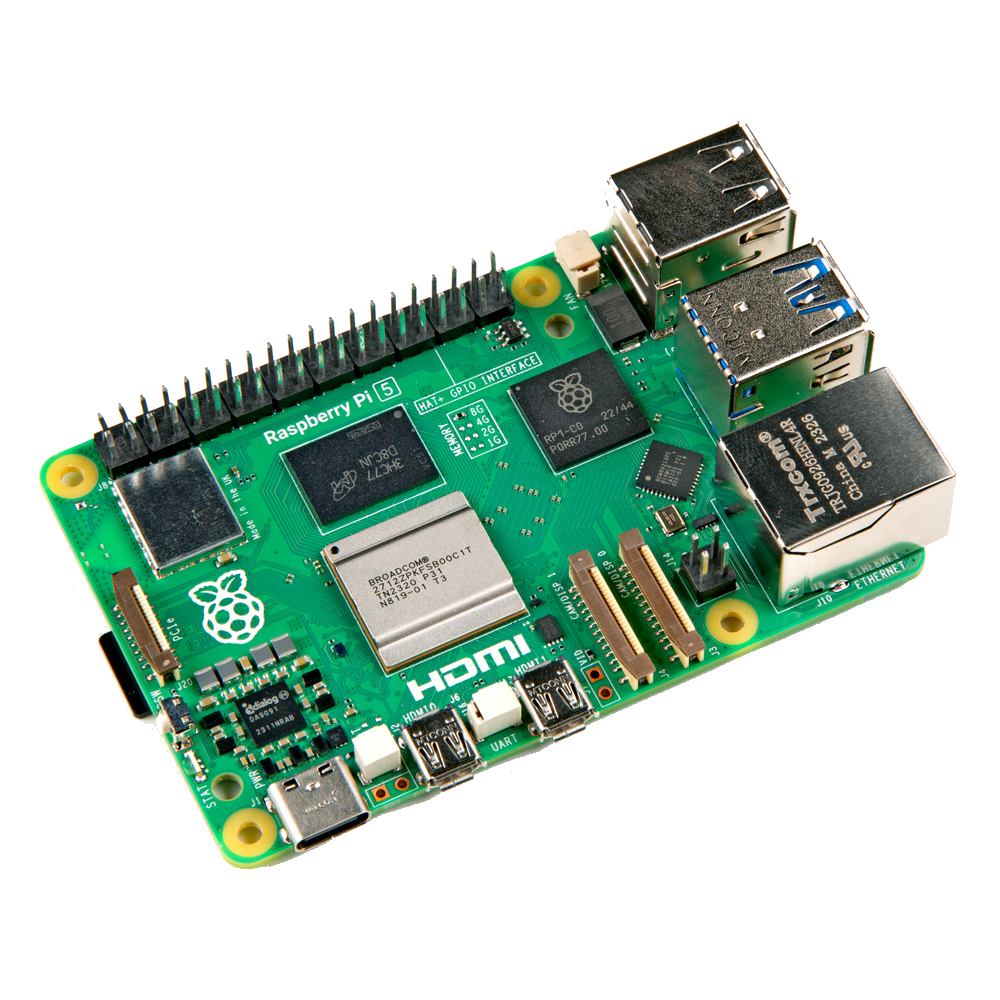

Raspberry Pi 5
Best Raspbery Pi Overall
$117 $136 Save $19
Raspberry Pi 5 is an improved iteration of the Pi 4, complete with a stronger processor, enhanced GPU, and support for simultaneous 4K60Hz display output. Highly customizable, the single board offers an array of applications for the craftiest of users.
Pros | Cons |
|---|---|
✓ 2.4GHz Wi-Fi support | ✗ No Bluetooth support |
✓ 26 GPIO pins for multi-function device support | ✗ Could include more RAM |
✓ 133MHz dual-core processor | |
✓ Noticeable upgrade from RP2040 model |
Small and inexpensive, the Raspberry Pi Pico W may not look like much, but it’s a faithful, more compact iteration of the Pi that can stand up to its larger counterparts. The Pico W is already a step above the older RP2040 thanks to integrated 2.4GHz Wi-Fi support, even though the lack of Bluetooth 5.0 compatibility still stings.
This miniature unit is light on RAM at only 264KB, but it’s powered by a dual-core Arm Cortex M0+ 133MHz processor and features 2MB of Flash memory. There are 26 multi-function GPIO pins, which expands the usability of the budget Raspberry Pi and allows you to get a little creative.
The device is supported by C and C++ coding and has MicroPython support, making it a worthwhile tool for starting developers and programmers. Its suite of features, from USB 1.1 support to a temperature sensor, drag-and-drop programming, and eight programmable I/O state machines designed for improved peripheral connectivity, lend to the functionality of the affordable Pi.
The Pico W may be small, but there are dozens of potential uses, from building a USB foot pedal to developing simple solutions to common problems, like an automated plant waterer.
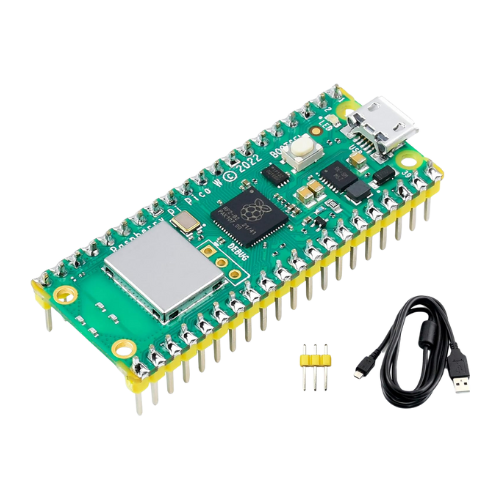

Raspberry Pi Pico W
Best Budget Raspberry Pi
Raspberry Pi Pico W is a base-level model of the well-known customizable single-board computer. The Pico W includes Wi-Fi support for the first time to make coding and other applications more accessible.
Pros | Cons |
|---|---|
✓ Great introduction to Raspberry Pi | ✗ No real guidance for specific applications |
✓ 128GB is more than big enough for a starter kit | ✗ A fan would have been a nice touch |
✓ Includes sturdy aluminum case | ✗ No keyboard included |
✓ Thermal pad included to reduce heat |
A great launching point for newcomers to Raspberry Pi, the CanaKit for Raspberry Pi 5 comes with a 128GB microSD card preloaded with Raspberry Pi OS, a durable and easy-to-open aluminum case, a power supply, Micro HDMI cables, and the Raspberry Pi 5 board. When you think of the essentials you could need to enjoy the basics of Raspberry Pi, this is virtually everything, save for a monitor, keyboard, and mouse.
The included Pi 5 features 8GB RAM and the quad-core Arm Cortex-A76 2.46GHz processor, which is enough power for quite a few different applications. But don’t feel like you need to launch into more advanced uses. The kit’s simplicity is made to serve as an introduction to Raspberry Pi, so you can get familiar with the Raspberry Pi OS without feeling like you’re not using its components to their fullest.
That’s not to say you can’t get wild with the Raspberry Pi 5 with this starter kit, though it’s not entirely helpful in guiding you toward different applications. For example, you could turn it into a gaming center, but it’s missing the cooling component you’d want to prevent overheating.
Making use of what’s included is fairly easy, though, as the aluminum case is easy to pop open and the Pi 5 unit nestles comfortably inside.
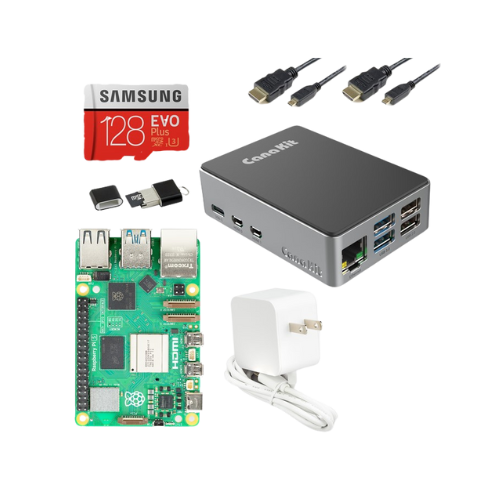

CanaKit Raspberry Pi 5 Starter Kit
Best Raspberry Pi Starter Kit
The CanaKit starter kit for Raspberry Pi 5 includes everything a newcomer to the Pi ecosystem needs to start building custom applications, from media centers to retro gaming consoles.
Pros | Cons |
|---|---|
✓ No soldering required | ✗ More of a learning tool than a practical use of the Pi Pico W |
✓ A lot of different inputs to try | ✗ Jumping into actual coding can be intimidating |
✓ Components connect easy to the main board | |
PicoBricks software is great for all ages |
If you want to launch into more involved and hands-on applications with your Raspberry Pi unit, robotics is a great place to start. It’s a fun mix of virtual coding and actual hands-on work as you sift through the included cabling and components to build a responsive unit. The PicoBricks Base Kit is ideal for children and adults who want to understand the basics of programming and robotics without the mess of soldering or advanced coding.
Using the small Raspberry Pi Pico W as the core computer, the PicoBricks kit easily connects components like an OLED screen, RGB LED indicator, IoT board, battery input, and more—and you can learn to manipulate them all using the Picobricks program.
Better yet, the program starts as a simple drag-and-drop software, so you can easily see how coding affects the board in real time. Then, when you’re ready, you can get into actual coding through open-source platforms like Arduino.
PicoBricks encourages creativity, but there is a slightly steep learning curve from using the PicoBricks software to more involved coding applications. If you have the time and patience, you can make the leap from the more visual software, though it may take some time to fully understand how to take what you’ve learned and carry it over to more practical uses.
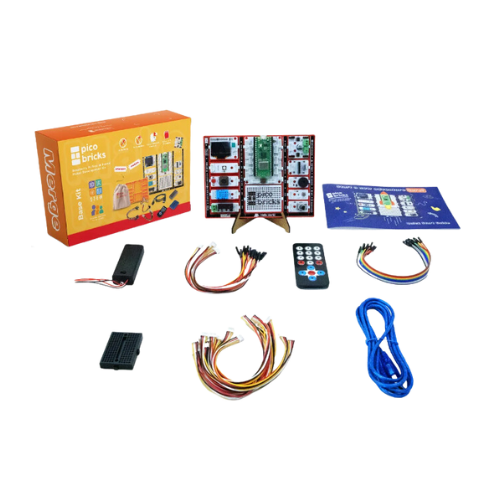

PicoBricks Base Kit: Robotics Project Starter Kit
Best Raspberry Pi for Learning Code
Enjoy the simplicity of coding and robotics with PicoBricks and the base kit. Complete with a Raspberry Pi Pico W and necessary connectors, the kit starts beginners on the road to visual coding to develop mechanics and machinery.
Pros | Cons |
|---|---|
✓ 8GB RAM is more than enough | ✗ Doesn’t include Raspberry Pi 5 |
✓ Wi-Fi and Bluetooth capable | ✗ Case limits ability to upgrade Pi model |
✓ Dual 4K/60Hz output with included HDMI cord | |
✓ Included fan extends play time |
It doesn’t take a lot to make a retro gaming console, and this Raspberry Pi 4 starter kit has just about everything you’ll need. The plain black case offers an easy installation for the included 8GB RAM, 1.5GHz 64-bit quad-core CPU Pi 4, complete with slots to help minimize the risk of overheating. If you do want to take advantage of a Pi 5’s enhanced GPU and 60fps, you will need to find a different housing unit.
Everything else, though, is ready for installation on both models, including the small fan, USB-C power supply, and HDMI cords. The 128GB microSD card is more than enough space to run a retro gaming OS like RetroPie or Recalbox and still have room to install something like the Raspbian Raspberry Pi OS. You can swap between playing your NES favorites and working on something a little more practical with little effort.
GeeekPi did stumble a little by failing to include a controller. Thankfully, with the Pi 4 and Pi 5, you can connect your own Bluetooth controller, so it’s not a dealbreaker. The kit’s minor shortcoming is easy to overlook once you peep the dual 4K/60Hz resolution outputs that can run at max settings at one time (compared to the Pi 4, which only supports dual 4K/30Hz), which really makes your favorite retro games pop.
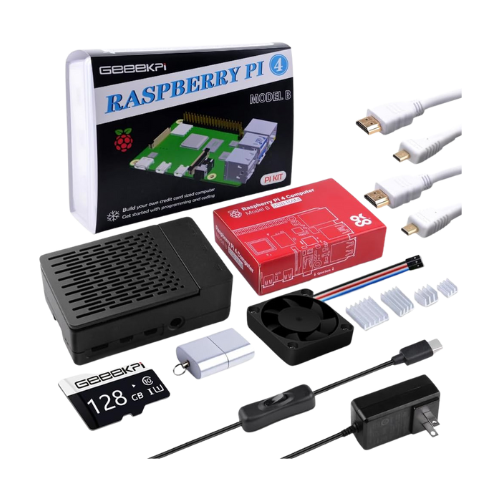

GeeekPi Raspberry Pi 4 8GB Starter Kit
Best for Retro Gaming
$140 $280 Save $140
Recreate the heyday of gaming with a custom-made retro console built using the GeeekPi starter kit. Based on Raspberry Pi 4, the starter kit includes a fan, HDMI cables, power supply, thermal pads, and microSD card.
FAQ
Which OS should I use for a Raspberry Pi?
It depends on what you’re using the Raspberry Pi for. Raspbian OS is the officially supported OS, so it receives the most support when it comes to working on the Raspberry Pi ecosystem. It features some basic tools for programming, but if you stray into other applications, other systems may serve you better. If you’re using your Raspberry Pi as a Linux-based media server, you may consider OSMC. Alternatively, RetroPie is an easy-to-use OS for retro gaming.
How do you tell which Raspberry Pi model I have?
If you already have an operating system installed, you can run the “cat /sys/firmware/devicetree/base/model” command in the terminal window to display the model number:
You should also be able to find the model number on the board itself, typically on the front side. If it’s not there, you can deduce the Raspberry Pi model by the processor model. For example:
- Processor model 2711 would be on a Raspberry Pi 4/400
- Processor model 2837 would be on a Raspberry Pi 3
- Processor model 2836 would be on a Raspberry Pi 2
- Processor model 2835 would be on a Raspberry Pi 1 or 0
- A processor sporting the Raspberry Pi logo would be on a Raspberry Pi Pico
How do you update a Raspberry Pi?
On the Raspbian OS, you can use the apt tool to easily update the device. Open the terminal window and type “sudo apt update.” If you didn’t create a user account, the default password is “raspberry.”
To upgrade every package on the Raspberry Pi, type “sudo apt full-upgrade.” The device will start its update and prompt you to reboot once it’s completed. To reboot the Raspberry Pi, type “sudo reboot” into the terminal window.
Is a Raspberry Pi a computer?
Raspberry Pi devices are simple, single-board computers that can run basic applications on a Linux-based system. The concept for the device came about as an affordable means of teaching computer science. Like a computer, the Pi features a processor, a small amount of memory, a video chip, storage or storage options, and sometimes Wi-Fi or Bluetooth connectivity. Because of its simplicity, Raspberry Pi can be turned into a number of things, including retro gaming console emulators, media streaming boxes, and tools to learn programming.
How well does Plex run on a Raspberry Pi?
While Plex is capable of running on Raspberry Pi devices quite well, RasPlex is a dedicated Plex client built specifically for use on Raspberry Pi computers. You will need at least a Model B 512MB to run the RasPlex client and a 4GB Class 10 SD or MicroSD card to download the client onto for transfer to the Raspberry Pi.
source
